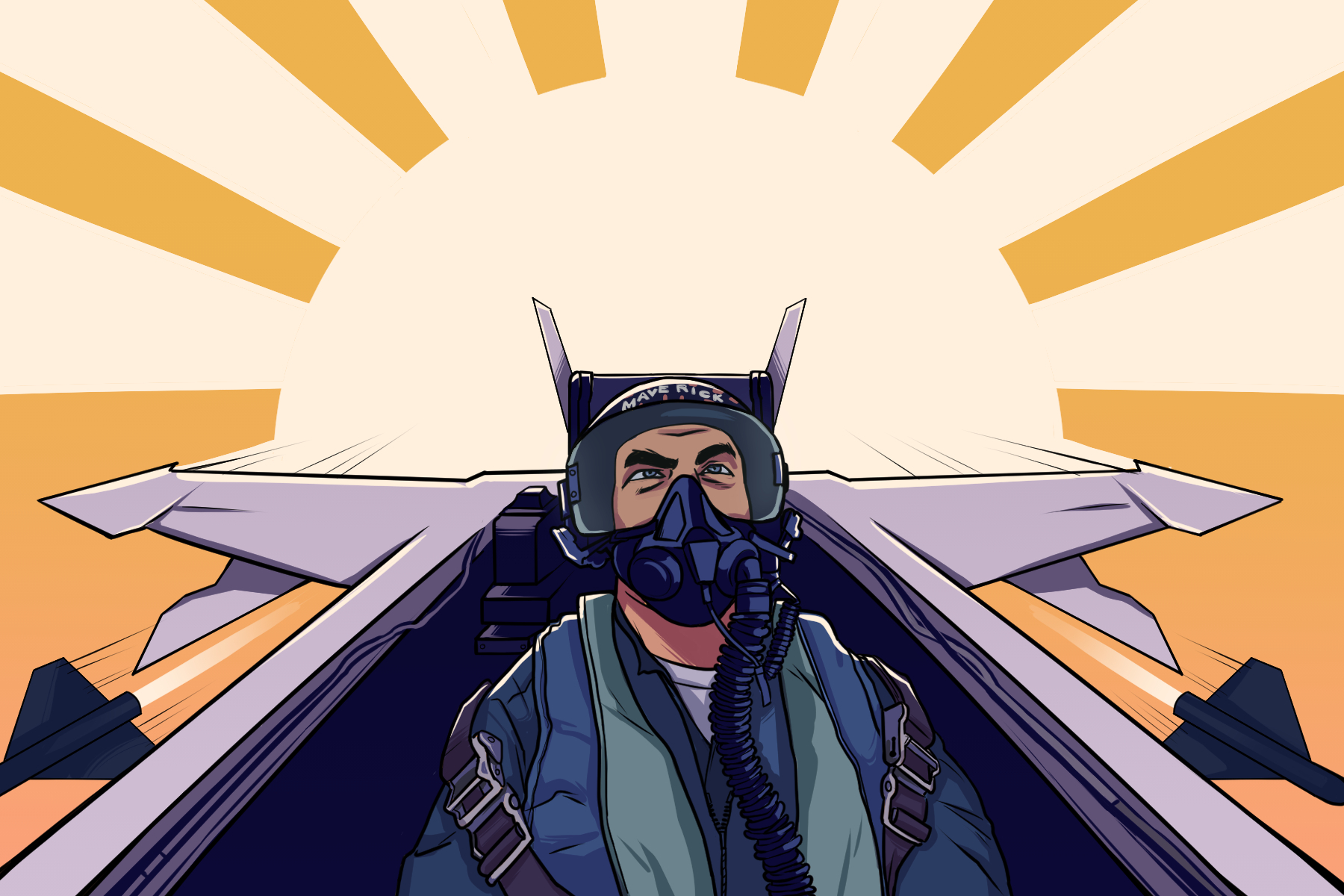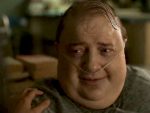When news first came out that “Top Gun: Maverick” (2022) was finally going to be released, reactions were understandably skeptical. There seemed little need for a sequel, especially so long after the original “Top Gun,” which premiered in 1986. Most likely it would just coast on the nostalgia for the successful original. Plus, the film was delayed several times. In one scene, Maverick drives a motorcycle that sports license plates clearly expired in 2020, a reminder that the film was made and should have been released before the pandemic.
Yet I doubt that, well made as the movie was, it would have been as successful before COVID-19. Part of the sequel’s $248 million worldwide success — Tom Cruise’s biggest opening, and the biggest non-superhero opening of the pandemic — is likely due to the film’s timing. As the country emerges from the pandemic and the war between Russia and Ukraine brings military matters to the front of the mind for many viewers, a movie about fighter pilots seems extremely fitting. Its largely apolitical patriotism (pro-America, with its enemy unnamed) is welcome as the country becomes more divided.
Besides its timing, the success of “Top Gun: Maverick” is likely due in part to the way it soundly anchors itself in the feel of the original. The sequel maintains its nostalgia while still propelling Pete “Maverick” Mitchell (Tom Cruise) into the next generation. It even begins with a recreation of the original movie’s sepia-toned opening sequence, complete with “Danger Zone” playing. It’s blissfully deafening and all-encompassing in IMAX. Fighter jets land and take off from the ship, waved on by the crew on deck. But unlike in the original, women are very visible among the group and are mentioned in the opening black-and-white frame of text. (The original opening scene can be viewed here.)
From the beginning of “Top Gun: Maverick,” we can see the Maverick of the past clashing with the future when we are introduced to his brief new job as a test pilot. The Maverick of “Top Gun” battles with the ghost of his father, becoming a reckless yet talented fighter pilot. He’s second in his class at Top Gun, with a bright future even after the death of Nick “Goose” Bradshaw (Anthony Edwards). By the sequel, Maverick finds himself highly decorated yet stuck as a captain in the Navy, haunted by the ghost of his past, and kept back by his enduring youthful stunts. (This forms a neat parallel with Tom Cruise, who insists on doing many of his own stunts, even when injuries halt production.)
Only a few minutes into the film, Maverick hears that the research project he is test flying for is going to be shut down. He decides to essentially steal the Navy’s top-secret new plane, the Darkstar, to push it past Mach 10 and save the project. Despite protests from his groundcrew, he keeps going faster until the plane crashes. Soon after the accident, when he is disciplined for disobeying orders and sent back to Top Gun to teach, he receives his first of many reminders throughout the film that he is on the way out, that he needs to let go. The pilots of the past are gone, and obedient, predictable machines are the future.
Like the rest of the movie, the Darkstar scene uses its well-placed light humor to balance its danger and emotional moments. After the crash, he walks into a restaurant, helmet in hand and silently drains most of a glass of water. He then asks where he is, to which a young boy replies, simply, “Earth.” While humor occupies only a small part of the film (likely less than the joyous original), the adept placement of humor is a trend that continues as the film raises its stakes. My favorite moment comes at the end, in the heartwarming reunion between Maverick and Rooster. After the latter crashes his plane to save Maverick, who had gone down behind enemy lines to save Rooster, the scene ends with Maverick hitting the young pilot. The moment is surprising given the pilot’s desperate run to and embrace of Rooster, but it quickly becomes apparent that he is angry at Rooster for not saving himself after Maverick’s sacrifice.
Another humorous moment from the end of the film is Maverick’s thumbs-down to an enemy fighter pilot. It goes as well as expected. There is also some well-done comedic timing after Maverick is lectured at the academy. His supervisors rebuke him for dangerous unplanned maneuvers and flying below the ceiling of 5,000 yards, only for him to awkwardly show them a petition to lower the ceiling. Even while sneaking out of the house of his love interest, Penny Benjamin (Jennifer Connelly), he opts to jump from the window. He falls over after the jump, coming face-to-face with the very person he was trying to hide from: Penny’s young daughter, Amelia (Lyliana Wray).
While “Top Gun” had a much smaller scope, focusing on who would be top of the class at the academy, “Top Gun: Maverick” has much higher stakes. Maverick’s assignment is to train some of the recent Top Gun academy graduates for what is essentially a suicide mission: destroying a heavily guarded uranium refinery before the radioactive product is delivered. They have little chance of making it out alive, and Maverick must assemble a team with the best chance to even complete the mission.
But in true Maverick fashion, he also decides to bring them back alive. This goes contrary to the wishes of those in command at the academy who think it threatens the mission’s success. His need to constantly push boundaries — like flight ceilings, high speeds, and maneuvers — threatens his pilots, his planes, and his position in the Navy. His rebellion makes it seem like he might not even make it to the end of training without getting fired.
Like in “Top Gun,” the thrilling, triumphant flight scenes also make up much of the stakes in “Top Gun: Maverick.” Arguably, the largest single event in the plot of “Top Gun” is when Goose dies after the engines in his and Maverick’s F-14 give out and they eject. It changes the course of Maverick’s life, as well as the life of Goose’s son. In the sequel, I could not watch the daring, breathtaking flights, filmed in real F-18s, without holding my breath and hoping for the best.
Planes crash. Pilots almost die. From “Top Gun,” we know the stakes, and “Top Gun: Maverick” takes the opportunity to remind us of them: One pilot passes out after flying at a force of 10G and two others crash in a surprising and totally inconsistent bird attack, even before the emotional final mission. Since no one dies in “Top Gun: Maverick,” especially not Tom Cruise, I did feel both let down and relieved by each spectacular sequence. Just seeing the footage of actual fighter jets from inside the cockpits in full IMAX glory the way the filmmakers intended, was well worth it. I suspect a lot of moviegoers feel the same way.
The movie finds its heart in the impact of Goose’s death on Maverick and the grudge Goose’s son Bradley “Rooster” Bradshaw (Miles Teller) holds against his father’s former brother-in-arms. When we are first introduced to Rooster, he looks and acts so similar to Goose, down to the mustache. He very well could be his father and Maverick looks like he has seen a ghost. In an homage to the original, Rooster sings “Great Balls of Fire” and plays the piano. The moment is juxtaposed with footage from the original, where he sits on the piano as a young boy singing along with his father, mother, and Maverick.
The tense, loaded exchanges between Rooster and Maverick throughout the movie carry intense emotional weight, making their team-up at the end of the film seem triumphant as a result. When they save each other’s lives and steal an F-14, it is hard not to look at their newfound closeness and reliance on each other without thinking of Maverick and Goose. The similarity is especially clear because they fly in the kind of plane flown by Maverick and Goose in “Top Gun.”
The sequel’s strengths are the moments that clearly pay homage to the original, down to the credits. This includes the opening sequence, as described earlier, which may very well have been taken from the original. While a football scene replaces the original’s volleyball game, the prominent placement of Cruise’s abs, along with those of the other male leads, remains. Pictures from the original movie dot scenes throughout, especially those of Goose and Iceman. Maverick’s new love interest is actually the admiral’s daughter referenced in passing in the original.
These moments are done well enough that the movie does not seem to drown in nostalgia (as I had expected it would), while still creating a sense of awe and continuity. Rather than being a rehash of the original, the movie evokes “Top Gun” in the soundtrack and scene composition while the action and characters are new enough that the movie can stand on its own.
Despite all the ways “Top Gun: Maverick” references the original, only Val Kilmer returns as Tom “Iceman” Kazansky, now an admiral and close friend of his once-rival Maverick. As Maverick spends the early part of the movie continuing the irresponsibility of his early youth, Iceman is the only person standing between him and a dishonorable discharge. Their friendship, mostly shown through text messages, is why Maverick returns to Top Gun academy at Iceman’s request to train graduates for the mission. Yet Iceman, an important part of Maverick’s past, is ushered out after only one graceful, poignant cameo, dying off-screen and receiving a fitting military send-off at his funeral. His death helps to move the story forward, forcing Maverick to move on rather than relying on his friend to save him.
The sequel also does well, albeit in a complicated way, in its treatment of women. Arguably its worst decision was to not mention or include either the standout astrophysicist Charlotte Blackwood (Kelly McGillis), Maverick’s love interest, or Carole Bradshaw (Meg Ryan), Goose’s wife, who died in the interval of time between the two movies. Yet women do have important roles in the movie, albeit not as important as Charlie’s in the first film. One of the best pilots Maverick trains is Natasha “Phoenix” Trace (Monica Barbaro), who goes on the mission with him.
Even Penny Benjamin is well developed outside of being Maverick’s love interest, perhaps more so than Charlie. Maverick’s former girlfriend was mostly described in terms of her job and a promotion she gives up, presumably to be with him. Between her daughter, her pub and her boat, Penny lives a full life, one that would be complete even without Maverick. In Iceman’s absence, she inspires him after he loses his job at the academy, although I doubt she meant for him to steal a Navy jet in an attempt to get his job back. (The attempt works probably too well, as he is chosen to lead the mission, something Penny is not happy about.)
Overall, “Top Gun: Maverick” has become a success due not only to nostalgia but also to its well-made nature. The movie stands on its own with its stakes, stunts (with real fighter jets), and commentary on the military and Tom Cruise’s age. It is highly watchable and thrilling in its action sequences, triumphant in its ending and poignant in Maverick and Rooster’s relationship. Still, the movie breathes a comforting but not smothering nostalgia, carefully constructed as the crew behind the sequel took their time in recreating details from the original and filming with real fighter jets. I was absolutely swept away by the movie in the cinema. Even people who dislike the sequel (or the original “Top Gun”) must agree that its box office success is well deserved.

















